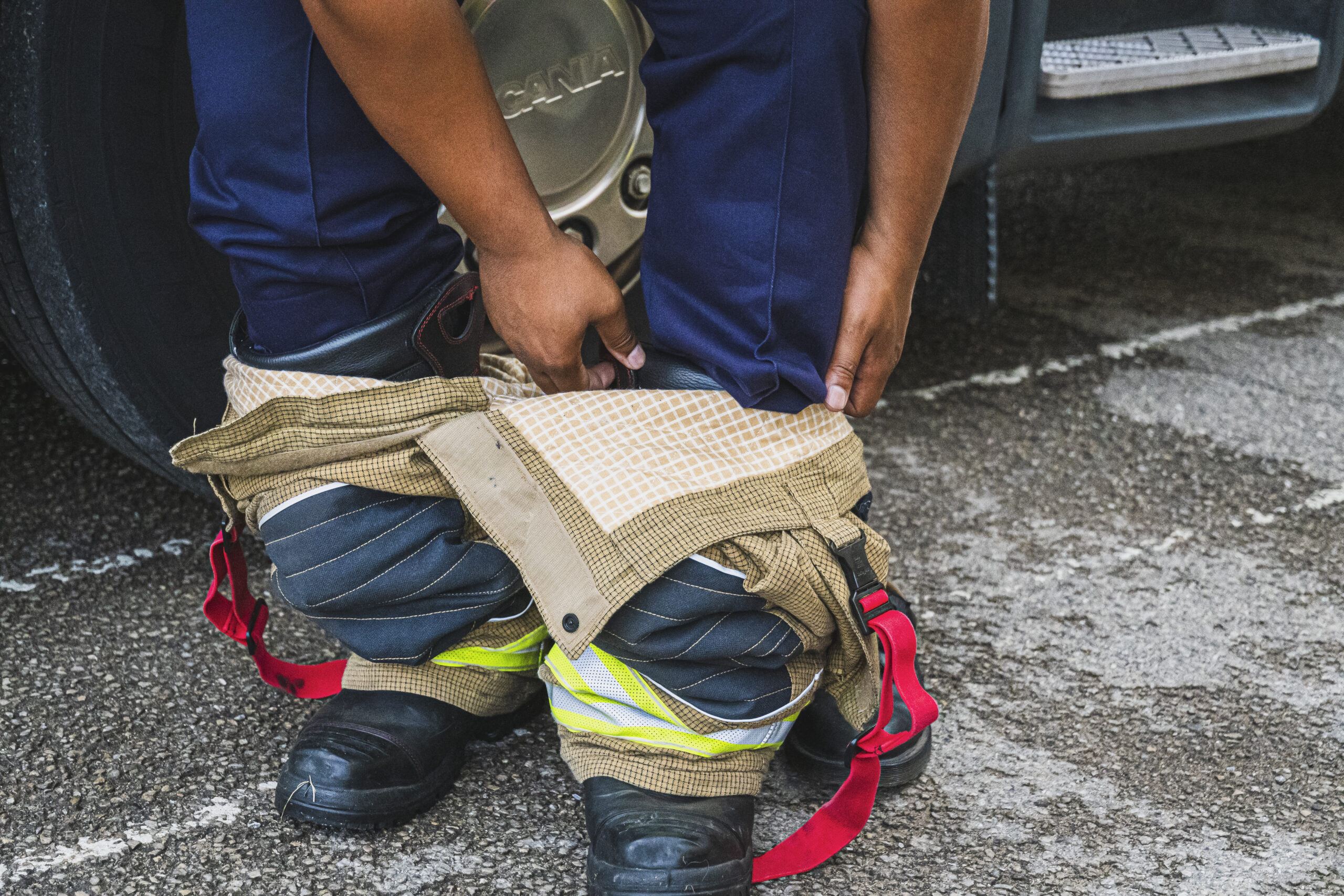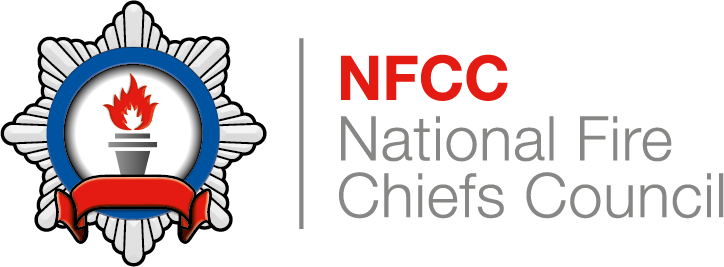Career Journeys
There are many traditional progression routes within the fire and rescue service, but career development is about more than just moving up the ranks. The opportunities available throughout your career allow you to build new skills, gain experience in different areas, and develop in ways that suit your goals and interests.
Progression doesn’t always mean promotion. It could be taking on an apprenticeship to gain new qualifications, exploring a specialist role, or broadening your knowledge through additional training. You might choose to move into a different function within the service, such as fire safety, prevention, or leadership development, or build on your existing role with new responsibilities. Different fire and rescue services may take different approaches to career development, so it’s always best to speak to your local service for more information.
Whether you choose to advance within your current role or explore a different function, building new skills ensures you are prepared for a range of career paths. Continuous learning and leadership development provide the flexibility to progress in the sector or transition into new roles, giving you the confidence and capability to adapt and grow wherever your career takes you.

Operational career progression
For operational employees working in frontline roles, career progression typically follows a structured pathway. Each stop on the journey opens up a range of opportunities in different functions, allowing you to build on the technical and operational skills developed from the start of your career. Many roles involve leadership, fire safety, or specialist expertise, offering diverse ways to progress while continuing to serve your community.
Firefighter
Firefighters carry out frontline firefighting, rescue operations, and fire safety work. There are two types: wholetime firefighters, who work full-time shifts, and on-call firefighters, who respond to emergencies when needed. Firefighters also engage in community safety, prevention work, and ongoing training to develop their skills and operational effectiveness.
Crew manager
Crew managers lead a team of firefighters and oversee fire appliances. They take charge of small-scale incidents involving up to three pumps, deputise for watch managers, and carry out fire safety duties. Some have specialist roles, such as training or technical rescue, ensuring crews maintain high operational and safety standards.
Watch manager
Watch managers lead larger teams, providing operational command at incidents involving up to three pumps. In on-call services, they manage a fire station. Their responsibilities include overseeing training, fire safety enforcement, and incident command. They play a key role in team development and ensuring service delivery meets professional and safety standards.
Station manager
Station managers oversee one or more fire stations, ensuring effective service delivery and operational readiness. They take command of incidents involving up to six pumps and provide specialist support at complex incidents. Their responsibilities include personnel management, training, fire prevention, and community engagement to improve public safety.
Group manager
Group managers oversee fire service operations across a geographical area or a specialist function such as fire safety, training, or incident response. They take command of major incidents and ensure service-wide consistency in operations. Their leadership helps drive improvements in emergency response, risk management, and firefighter development.
Area manager
Area managers lead directorates within the organisation, setting strategic direction for their service area. They take command of large-scale incidents involving up to nine pumps or provide specialist support. Their role involves shaping policy, managing resources, and ensuring the service operates effectively to protect communities and respond to evolving risks.
Senior leadership
Senior Leaders like assistant chief fire officers, deputy chief fire officers, and chief fire officers set the strategic vision for the fire and rescue service, ensuring it meets evolving risks and community needs. They oversee policy development, resource management, and organisational change. Representing the service at national and local levels, they drive collaboration, innovation, and continuous improvement while maintaining operational excellence and public trust.
Non-operational career progression
For employees in non-operational roles, progression is often based on skill development and experience within a function or department. Career growth can include moving into leadership roles or transitioning into new specialisms. Each role builds expertise in areas like human resources, finance, data analysis, or community engagement. Many support functions have recognised qualifications that can help structure career progression. As an example, you can explore career progression in the human resources (HR) function here.
HR Support Officer
HR support officers provide administrative assistance to the HR department, managing tasks such as data entry, maintaining employee records, scheduling meetings, and handling correspondence. They ensure accurate documentation and support HR initiatives, playing a vital role in the smooth operation of HR functions.
HR Advisor
HR advisors offer guidance on recruitment, employee relations, and policy implementation. They assist in developing job descriptions, advise on performance evaluations, and ensure compliance with employment laws. Their role is crucial in fostering a fair and consistent approach to workplace policies and procedures.
HR Manager
HR managers oversee the HR department, managing recruitment, training, payroll, benefits, and employee relations. They develop and implement policies that align with organisational goals, ensuring legal compliance and promoting a positive workplace culture. Their leadership supports both employee satisfaction and organisational effectiveness.
HR Business Partner
HR business partners collaborate with senior management to develop and implement HR strategies that support business objectives. They provide guidance on organisational development, succession planning, and employee performance, ensuring that HR initiatives align with the overall goals of the organisation.
Head of HR
The Head of HR leads the HR function, shaping organisational culture and strategic direction. They oversee policy development, talent management, and compliance with employment laws. Their leadership ensures the organisation attracts, develops, and retains talent, fostering a productive and inclusive work environment.
Real Career Stories – Learn how careers can change and progress
No two career journeys in the fire and rescue service are the same. Some people join straight from school, while others come from completely different industries. Many start as firefighters, while others find their place in fire safety, prevention, control, or support roles.
The fire and rescue service offers more than just a job – it’s a career full of opportunities for growth, development, and making a real impact. Whether through apprenticeships, volunteering, leadership roles, or specialist training, there are countless ways to build a rewarding career in the sector.
Joining the sector also means becoming part of a culture that values engagement and belonging. You’ll be connected to a national network of support and professional communities, including organisations like the Fire Fighters Charity, Women in the Fire Service UK, and the Asian Fire Service Association (AFSA), which offer resources, events, and opportunities to connect with others across the country.
Follow this link to find real stories from people across the fire and rescue service. They share how they got started, the challenges they’ve overcome, and what they love about their roles. Whether you’re considering joining the fire service or looking to progress in your career, these stories highlight the diverse paths available and the many ways you can develop.
Explore their journeys, get inspired, and see how you can take the next step in your own fire and rescue career.

Supporting career progression
Fire and rescue services play a key role in helping employees develop, progress, and thrive in their careers. Whether supporting individuals in their current roles, preparing them for leadership, or ensuring the right people are in the right positions, effective career development strengthens both the workforce and the service as a whole.
The NFCC Career Pathways provides a flexible resource that can be used on its own, alongside other NFCC People, Culture and Leadership products, or integrated into a local fire and rescue service career pathway. In addition, the NFCC Talent Management Toolkit supports services in building a workforce with the right skills, behaviours, and values, ensuring employees are engaged, developed, and retained.
Using the Talent Management Toolkit to support career progression
Attracting people with the right skills and values is key to building a strong workforce. This includes creating an effective internal and external attraction strategy and exploring tools from the NFCC Recruitment Hub to support fair and transparent recruitment and promotion processes.
Workforce and succession planning helps ensure services are prepared for the future. The toolkit provides guidance on identifying business-critical roles, developing succession strategies, and recognising potential to mitigate risks and strengthen workforce planning.
Ongoing development is essential for improving performance, productivity, and engagement. The toolkit supports both informal and formal learning, helping individuals take ownership of their personal and career development through structured career pathways and professional growth opportunities.
A positive and engaging workplace culture leads to happier, healthier employees who are more likely to stay and perform at their best. This toolkit offers guidance on measuring and improving employee engagement, ensuring services create an inclusive and motivating work environment.
Reducing employee turnover strengthens the service and ensures continuity of knowledge and experience. The toolkit helps services understand the reasons behind staff turnover and offers practical solutions for retaining talent within the sector.
Effective deployment means placing employees in roles that match their skills and strengths. The toolkit offers guidance on introducing colleagues to new roles, managing transitions, and supporting long-term career development to ensure a well-prepared and resilient workforce.
By using these resources, fire and rescue services can support career progression at every stage, ensuring a workforce that is engaged, capable, and ready to meet the evolving challenges of the sector.
